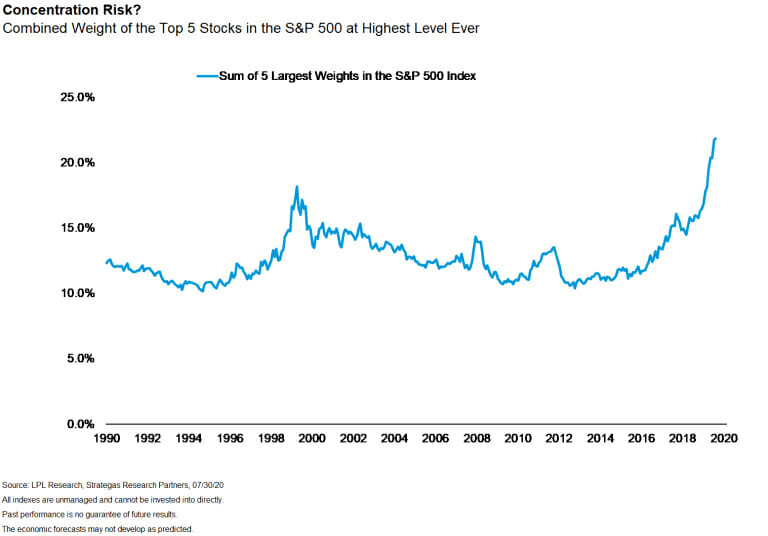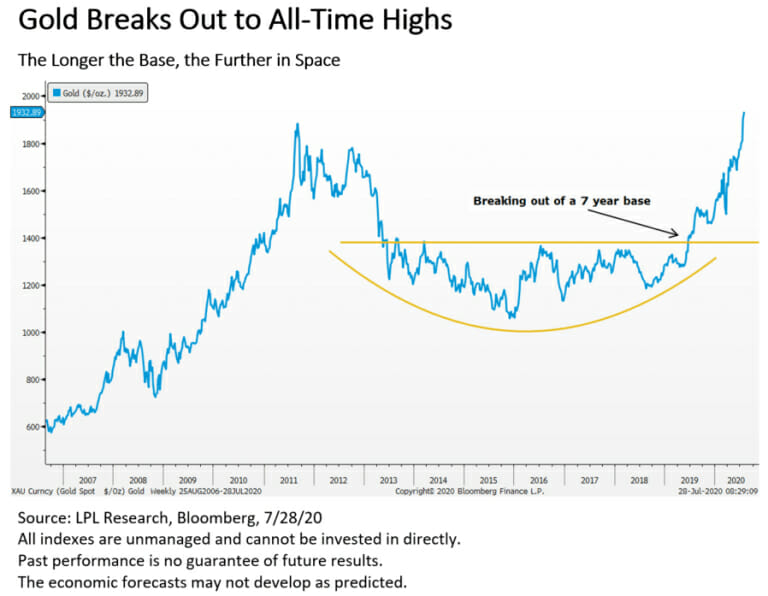
From a global pandemic to the fastest bear market and one of the greatest stock rebounds in history, 2020 has been both historic and devastating in many ways. Considering the magnitude of current events, it is easy to forget 2020 is also an election year. As we inch closer to the highly anticipated vote, we can expect more focus to move to November 3.
Rather than trying to predict future market movements, investors should focus on risk. For investors, understanding investment risk is a vital concept as it is a function of loss.
For example, the more portfolio risk that is taken, the greater the loss potential may be when markets decline. We tackle this phenomenon by applying educated assumptions in an attempt to avoid catastrophic damage over time. This is in the same vein of virtually every professional field; e.g. a surgeon speaking to probabilities, not certainties. These potential outcomes are based on historical data and events, statistics, trends, sentiment, etc., in an effort to control portfolio risk and to avoid permanent loss of capital.
History shows that stock market movements could be one of the best indicators of election results. One data point to consider is when stocks gained for the three months preceding the election, the incumbent party tended to win and vice versa when stocks declined.
As an example, there weren’t many who thought Hillary Clinton would lose in 2016. Though, the stock market did, as stock performance was weak before the election.
There may be many reasons for this relationship. I believe that Wall Street can sense change is coming, which leads to uncertainty over what new leadership may look like. Accordingly, investors tend to sell. When markets feel comfortable with an incumbent party victory, investors may feel they know what to expect based on the previous four years.
In fact, stocks have accurately predicted election results every year since 1984 and have been precise 20 out of 23 of the last elections (87%).

Concentration
Apple, Microsoft, Amazon, Google and Facebook have helped spawn a number of acronyms as they try to capture the rise of mega-cap tech stocks that have led the market higher for much of the decade. The average return for these five stocks to date this year has been a gain of more than 30%, while the broad S&P 500 Index is just marginally positive, at 0.4% through July 30, 2020.
While many other areas of the market have remained largely static, the total market value of these stocks has dramatically increased, making them an increasingly larger piece of market cap-weighted indexes such as the S&P 500. As seen in the chart below, the combined weight of the top five stocks in the S&P 500 has increased to its highest level ever, at nearly 22%. Only one of those five stocks (Microsoft) was a top five name in the index during the previous peak of March 2000.
Do you believe this may pose a risk to the index? Whether you do or not, I believe you need to prepare for this possibility. There are many ways to work toward mitigating these risks.
If you don’t have or are not confident in your risk management strategy, we would be honored to help educate you on possible ways to do so.

Time for gold to shine?
2020 is the first year since 1979 to have both gold and the S&P 500 make new highs during the calendar year. The last time this occurred in 1980, gold added another 17% and the S&P 500 was up 26%. It is widely believed that stronger gold likely means something is wrong in the markets and investors are more defensive, but it may not be that simple.
The U.S. dollar and gold were linked until 1971 when President Richard Nixon ended dollar convertibility to gold, however, since then, both gold and stocks have been higher 23 out of 49 years. Incredibly, in 12 of those 23 years, both assets were up at least 10%. 2019 was the last year gold and stocks rose over 10% simultaneously. This data suggest that gold and stocks can trend higher together, and it isn’t always a bearish development to see gold strong.
There can be many reasons to invest in gold. Gold based for seven years and broke out late last year, ushering in the new highs we are currently seeing. There’s an old technical saying that “the longer the base, the further in space,” and this played out quite well as illustrated by the chart below. Gold based for years before it surged higher. Technically, gold still looks like it will continue to do well, while fundamentally there are still tailwinds.
Investors have mentioned that it seems like there is an enormous volume of ever-changing data to consider. I believe what investors need is insight and context, which can be applied to your risk management process as it pertains to your specific family situation. This all works toward preserving your capital and avoiding large unrecoverable losses leading to the benefits of compounding returns.






















































































































